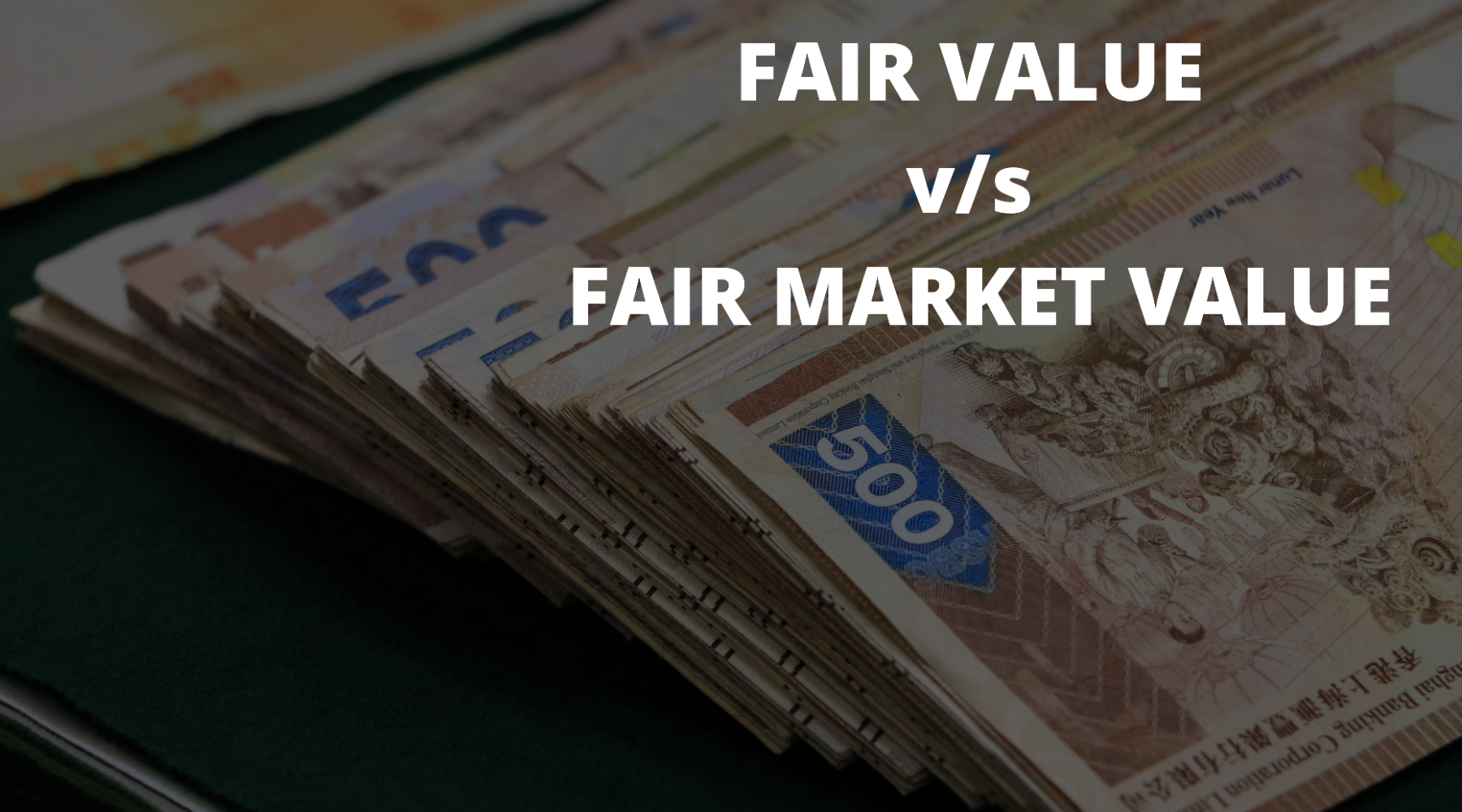Everyone uses terms in their area of expertise that make other professionals scratch their heads. For example, you may start discussing business valuations with an accounting professional.
Then two terms that will come up frequently are fair market value vs assessed fair value. They sound as if they are interchangeable. But they are, in fact, very different. The standard of the value chosen is fundamental to the valuation itself.
Fair value and fair market value are both standards of value. Standards of value are used for the determination of your business’s overall and 409 valuations.
The choice is made based on the use of the valuation results. It is sometimes pre-determined and part of contract requirements. An example of that is a shareholder agreement.
It is essential to assess the fair market value of an item you buy or sell as it can significantly impact your finances.
Correctly applying fair market value to taxes ensures there will not be adverse monetary implications later on or any fraud claims by authorities.
This article will show you the differences between fair value and fair market value. Additionally, you will understand which method is more suitable for your business valuation.
Fair Market Value
The most accepted standard of value is fair market value. The Internal Revenue Service (IRS) has defined it in its Revenue Ruling 59-60.
Fair market value reflects what the business would be valued in a sale. It is when both buyer and seller have full knowledge of the facts and are under no duress.
It is the number that you would expect to see if you put your business out into the marketplace. The keyword in the fair market value is the “market.” Consider common and preferred stock traded on the New York Stock Exchange (NYSE).
Moreover, investors buy and sell the stock without controlling interest. Apply that to a smaller business without exchange-traded shares.
Therefore, the fair market value searches for the equivalent for a closely held business share.
Fair market value is used to value businesses for the following situations:
- Estate, gift, and inheritance transactions
- IRS filings and other IRS controlled transfers
- Sales of an entity on the open market or at an auction
A difference in fair market value from fair value is the market and control discounts. Fair market value has the following premiums and discounts:
- The discount for marketability accounts. This is for the cost in money and time to get the business to market.
- The discounts for lack of control accounts for minority interest. It impacts the amount of seller control. When a minority interest exists, there is often a lack of control over matters. The matters include salaries, distributions, or entity sales.
Fair Value
The fair value would be paid to transfer a liability or received to sell an asset. This happens in an orderly transaction between market participants at the measurement date. This is according to the Financial Accounting Standards Board.
The fair value may be the foundation for your business valuation. Then the consideration of the market discounts does not come into play.
Fair value is often considered a hazy concept. Its use is typically determined by state statutes and everyday usage.
- Fair value is usually statutorily determined, and state laws differ on how fair value is used.
- Also, fair value does not have discounts for lack of control or marketability.
Fair value is used for the following situations:
- Shareholder and partner disputes
- Buy/Sell agreements amongst shareholders. It helps to deal with internal transfers of shares.
A Slice of the Pie
Let us envision a pie divided into four slices. The value of each slice of pie differs. It depends on which standard of value is used as a basis for the valuation.
- The pie is valued first as a whole pie using fair value as our foundation. Then each slice is valued in proportion to the whole. In this case, each of the four slices would be valued at one-fourth of the whole pie’s value.
- Suppose fair market value serves as the foundation for the valuation. In that case, equal portions of the pie will likely have different values. Every pie-slice owner cannot control the size of their slice. This is because of a lack of control.
Any slice sold in the market will also have less value. This is because a commission must be paid to the pie vendor that brought the pie to market and sold it.
So, the commission paid to the broker who sold the business in the marketplace impacts the value.
Conclusion
It is essential to understand the differences between fair and market value. This is especially when you are in the valuation industry.
A valuation firm will value an asset’s value through various methods to decide which value is a close fit.
It will sell the asset at a price that correctly reflects the value of the asset. This will reduce the overall risk. Assessment of risks and failures is a crucial part of running a business.









